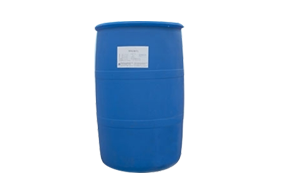Glyphosate itself is a low toxicity pesticide, which will be fully biodegradable in the natural environment soon after being absorbed by the soil. The current research believes that it will not harm the environment. However, fatty amines are highly toxic to aquatic fish and mammals and difficult to biodegrade, so its safety has been questioned more and more.

Surfactants containing alkyl phenols and branched chain benzene also have a certain synergistic effect on glyphosate pesticide, and are often used as synergists. However, recent studies have shown that these compounds degrade very slowly, and the degraded alkylphenols and fatty amines are more toxic and potentially harmful to the environment. Therefore, countries all over the world are trying to develop new additives that can replace them. Obviously, those green surfactants that are plant-derived, environment-friendly, low aquatic toxicity, easy biodegradation and no toxicity to crops are attracting more and more attention of researchers.
Considering the development trend of waste treatment technology, environmental assessment, cost-effectiveness and other comprehensive factors, the application of biosurfactant alkyl glycosides in industrial waste treatment is feasible.
(1) Ad process is considered to be a promising waste treatment technology. However, its application is limited by its dissolution and hydrolysis. The above results show that surfactant APG can be applied to water treatment, food and agricultural waste treatment, and has a significant role. Therefore, it is theoretically feasible to apply APG to industrial treatment technology (Fig. 2).
(2) Ad method has been widely used in developed countries such as Europe, Japan and the United States. China's ad technology is in its infancy. At present, although there is no ad plant for large-scale treatment of food waste, about 20 projects dealing with fermentation and anaerobic technologies such as MSW and FW are being planned and implemented, which has laid a foundation for APG to enter the field of waste treatment.
(3) From the perspective of environmental protection, when alkyl glycosides enter the nature, they can be completely degraded into CO2 and H2O by microorganisms in about one week. They are non-toxic and harmless to the environment.
(4) Ma and Zhang believe that the cost of biosurfactants is 3 ~ 4 times higher than that of chemically synthesized surfactants, which limits their application. However, after more than ten years of development, technological improvement and the application of new technologies have reduced the production cost. In the field of daily chemistry, the most commonly used chemical synthetic surfactant is fatty alcohol ether sodium sulfate (AES). At present, the market price is 8000 ~ 9000rmb / T, while the new surfactant alkyl glycoside adopts more advanced one-step technology. The market price of industrial APG is about 10000 RMB / T, and the gap is very small. In terms of cost, It is completely feasible to replace chemical surfactants. The author mentioned in previous articles that China has successively established several APG production lines in recent years, with increasing production capacity and competition, it is urgent to find new application fields. Therefore, considering the production capacity, the demand for surfactants for waste treatment can be met in the future. HTC method is also a waste treatment method with great development potential. It is a hydrothermal carbonization process. Alkyl glycosides as surfactants can increase the dissolution and hydrolysis of organic matter in waste and promote hydrothermal carbonization. Therefore, it is also feasible to apply it in HTC method.